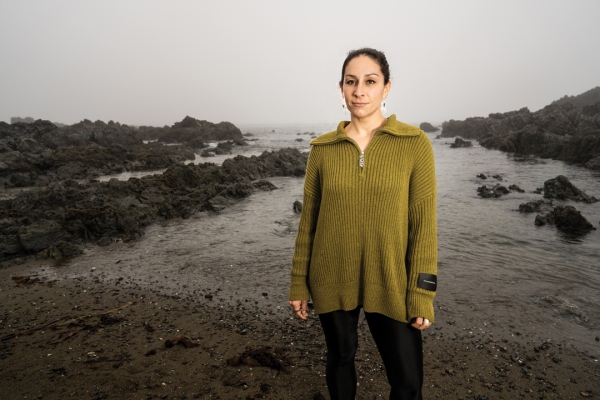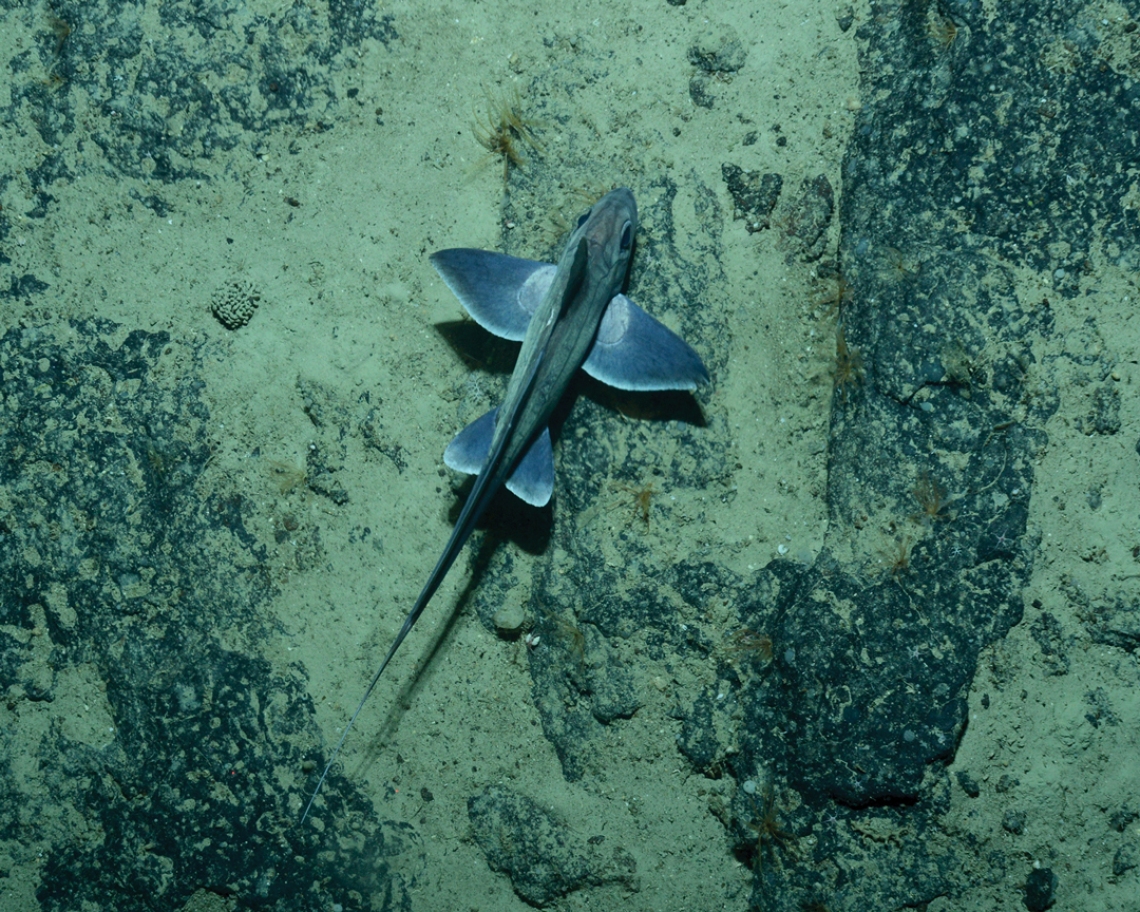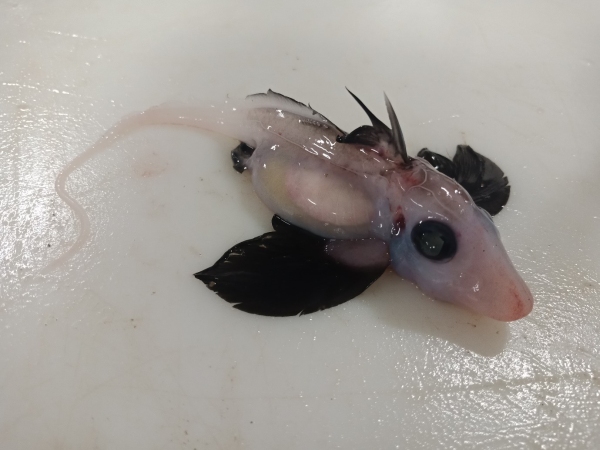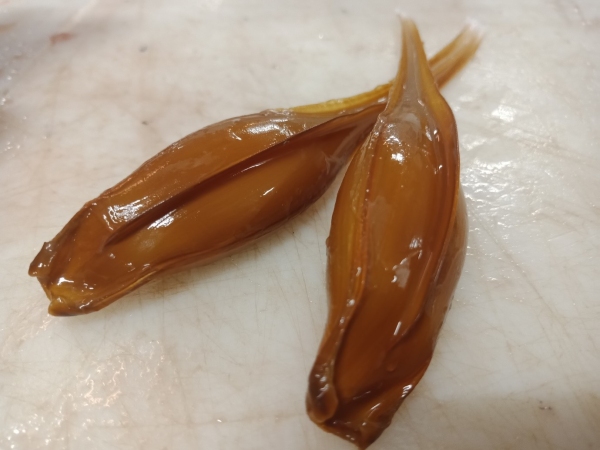What small creature lives hundreds of metres below the waves, has big dopey eyes and a tiny little mouth that you can only just get your pinky finger into?
Surprisingly, it is a type of shark. Oxynotus bruniensis, to be precise, more commonly known as the prickly dogfish.
A prickly dogfish was the first deepwater shark that fisheries scientist Dr Brit Finucci saw. It is now one of the self-confessed shark hugger's all-time favourites.
Mention the word shark and most people picture a large, menacing coastal marauder. But nearly 80% of New Zealand’s sharks spend their lives deep below the surface and are hardly ever seen.
Surviving at depths of more than a kilometre below the waves, with some even generating their own bioluminescence, they are part of a weird and wonderful family.
NIWA’s resident shark specialist is on a mission to throw new light on these quirky deepwater residents, and the role they play in our marine ecosystems.
Growing up landlocked in Canada, Finucci didn’t see the ocean until she was 14 years old. It was another five years before she saw her first shark in the wild.
Finucci says she was struck by how little was known about the fundamental biology and ecology of these intriguing fish, along with their vulnerability.
“We are lacking so much ecological data for this group of animals, but we also know through fisheries and trade information that many species are now in serious trouble.”
As she gained more understanding of marine biology and conservation, she became increasingly determined to turn this situation around.
Two degrees, and three countries later, Finucci found herself working alongside NIWA fisheries scientists, including acclaimed shark expert Dr Malcolm Francis, as she completed her PhD in “Deepsea Chondrichthyan Biology, Ecology, and Fisheries” at Victoria University of Wellington.
New Zealand has about 10% of the global diversity of chondrichthyans – the subclass of cartilaginous fish that contains not only sharks, but also rays and chimaeras. Finucci works across all three groups.
“For a small nation, we do have a good representation of the global diversity and about 20% of our species are found nowhere else in the world.”
Chimaeras, relatively small, mysterious fish with names such as ratfish, spookfish and ghost sharks – hold a particular fascination for Finucci.
“Take the ghost sharks, for example, we have no idea at what age they mature, in fact we don’t even know how long they live.”
So, when Finucci – in an incredibly rare find – discovered a newly hatched deepwater ghost shark during a recent Chatham Rise survey, everyone seemed excited.
Media outlets across the globe jumped on the unique find. The BBC, CNN and Reuters were among channels queuing up for interviews, and “Ghost shark” made the top 10 search list on Google UK.
Much of her work has a strong focus on shark conservation and management, and, for Finucci, the baby ghost shark media storm was a perfect opportunity to raise the profile of deepwater sharks.
“Having sound knowledge and understanding of their biology and ecology, such as age-at-maturity and population structure, is important for fisheries management.”
Finucci’s journey as a researcher has not always been plain sailing. She lost seven kilos on her first survey voyage on the Chatham Rise. But she loves the work and remains determined to characterise New Zealand’s full range of unique deepwater chondrichthyans.
While deepwater sharks are her favourite, Finucci has now taken on projects researching many New Zealand sharks, including a project ageing New Zealand white sharks.
“We are working with a sample collection spanning over 30 years. To my knowledge, this collection includes what may be the only known sample of a pregnant white shark. Once we have completed this work, we are hoping to explore new ageing techniques, such as DNA methylation, which are currently being developed overseas.”
Finucci’s passion project, however, is to initiate a long-term deepwater shark tagging programme in New Zealand waters.
“This will tell us more about how these animals are using their deepwater habitat, and how they move around New Zealand waters, and tagging programmes can also be used to assess the impact of fishing activities, for example by measuring post-release survival.”
It is no easy feat working with creatures that often live more than a kilometre below the surface.
However, the determined shark fanatic, viral media star, and five-time national Muay Thai champion brings her own unique skill set to the challenge.
This story forms part of Water and Atmosphere - May 2022, read more stories from this series.




